With Walk East ...
[video v=AaaD8lNkRdw]Bonus film - the Singing Sand Dunes of GanSu ...
Plus more videos ...
Live more ...
With Walk East ...
[video v=AaaD8lNkRdw]Bonus film - the Singing Sand Dunes of GanSu ...
Plus more videos ...
With Travel In China ...
[video v=TMTfWgPs6yY]LiKeng Ancient Town, located in Wuyuan County of JiangXi Province, is a picturesque village known for its well-preserved architecture, traditional culture, and beautiful natural scenery. Often referred to as the "most beautiful village in China," LiKeng offers a glimpse into the country's rich history and rural life.
By Air: The nearest airport is Jingdezhen Luojia Airport (JDZ), located about 90 kilometers from LiKeng. From the airport, you can take a bus or taxi to Wuyuan County and then a local bus or taxi to LiKeng.
By Train: Wuyuan Railway Station is the closest train station, with connections to major cities like ShangHai, HangZhou, and NanChang. From the station, you can take a taxi or a local bus to LiKeng.
By Bus: Long-distance buses are available from nearby cities to Wuyuan County. From Wuyuan County, you can take a local bus or taxi to reach LiKeng.
LiKeng is renowned for its well-preserved Ming and Qing Dynasty architecture. The traditional wooden houses, stone bridges, and narrow lanes reflect the town's rich history and cultural heritage.
The Li Family Ancestral Hall is a significant historical site in LiKeng. It showcases intricate wood carvings, beautiful murals, and traditional Chinese architectural design.
LiKeng is dotted with ancient stone arch bridges that add to its scenic charm. These bridges, with their elegant curves and historical significance, are perfect for photography and leisurely walks.
The countryside around LiKeng is known for its lush greenery, terraced fields, and beautiful tea plantations. Exploring the rural landscape offers a peaceful and picturesque experience.
LiKeng's cuisine is characterized by its use of fresh, locally-sourced ingredients and traditional cooking methods. Here are some must-try dishes:
LiKeng Ancient Town in JiangXi Province offers a captivating blend of history, culture, and natural beauty. Whether you're exploring its ancient architecture, savoring local cuisine, or simply soaking in the serene atmosphere, LiKeng provides an unforgettable experience. Plan your visit carefully to make the most of your trip to this charming and picturesque village.
With Beijing Old Liu ...
[video v=XG3UQFykK2g] Plus more videos ...
With Heretic1988 ...
[video v=9UXmrdZErS8]On the ongoing restoration efforts ...
Plus more videos ...
With Scenic Relaxation ...
[video v=vvm8b2jAfv0]Location: Southwestern China, bordering Nepal and Bhutan.
Highlights: Home to Mount Everest (Qomolangma), the world's highest peak, and numerous other towering peaks. The region is known for its dramatic landscapes, deep gorges, and rich cultural heritage.
Location: Anhui Province.
Highlights: Famous for its granite peaks, hot springs, and ancient pine trees. The iconic sea of clouds and picturesque sunrises attract photographers and hikers.
Location: Hunan Province.
Highlights: Known for its towering sandstone pillars, lush forests, and deep ravines. The landscape inspired the floating mountains in the movie "Avatar."
Location: Flows from the Tibetan Plateau to the East China Sea.
Highlights: The longest river in Asia, featuring the Three Gorges, which offer stunning cliffs, dense forests, and cultural sites along its banks.
Location: Guangxi Province.
Highlights: Famous for its karst mountain scenery and crystal-clear waters. A boat cruise from Guilin to Yangshuo is a popular way to enjoy the breathtaking landscapes.
Location: Qinghai Province.
Highlights: The largest saltwater lake in China, surrounded by mountains and grasslands. It's a haven for birdwatchers and nature enthusiasts.
Location: Northern China and southern Mongolia.
Highlights: Known for its vast, barren landscapes, sand dunes, and unique rock formations. The desert is rich in dinosaur fossils and ancient Silk Road sites.
Location: Southwestern China.
Highlights: Often referred to as the "Roof of the World," it's the highest and largest plateau in the world. The region features expansive grasslands, glacial lakes, and the sacred Mount Kailash.
Location: Sichuan Province.
Highlights: Known for its multi-colored lakes, waterfalls, and snow-capped peaks. The valley is a UNESCO World Heritage Site and a paradise for hikers and nature lovers.
Location: Inner Mongolia.
Highlights: One of the most beautiful and well-preserved grasslands in China, known for its vast, rolling green plains, rivers, and traditional nomadic culture.
Location: South China Sea.
Highlights: Known for its tropical climate, sandy beaches, and clear blue waters. The island is a popular destination for beachgoers and water sports enthusiasts.
Location: Zhejiang Province.
Highlights: Comprising over a thousand islands, it offers beautiful beaches, rocky coastlines, and traditional fishing villages.
Location: Guilin, Guangxi Province.
Highlights: A natural limestone cave known for its stunning stalactites, stalagmites, and colorful lighting.
Location: Yunnan Province.
Highlights: A UNESCO World Heritage Site, this area features towering limestone pillars that resemble a forest made of stone.
Location: Several provinces including Gansu, Guangdong, and Hunan.
Highlights: Characterized by red sandstone formations and steep cliffs, the Danxia landscapes are known for their vibrant colors and unique rock shapes.
Location: Gansu Province.
Highlights: Famous for its colorful, layered rock formations that create a stunning "rainbow" effect across the mountains.
China's natural landscapes are incredibly varied and offer a wealth of experiences for travelers. From the towering peaks of the Himalayas to the serene waters of the Li River, and from the vast expanses of the Gobi Desert to the lush valleys of Jiuzhaigou, there is something for everyone to explore and admire. These diverse environments not only showcase the natural beauty of the country but also reflect its rich cultural heritage and deep connection to the land.
Video by Beijing Old Liu ...
[video v=XttOsXQiKHE]YeLang Valley, located in GuiZhou province, China, is a unique cultural and artistic site known for its extensive collection of outdoor sculptures and art installations. This valley, often referred to as a “land of imagination,” showcases the creativity and vision of local artists, particularly the works of artist Song Peilun. Here's a detailed look at the sculptures in Yelang Valley and nearby art places:
### Yelang Valley Sculptures
1. **Artist Song Peilun**: Yelang Valley is the brainchild of Song Peilun, an artist and former professor at the Central Academy of Fine Arts. He began creating this art paradise in the 1990s, transforming the valley into a sprawling outdoor gallery.
2. **Eclectic Sculptures**: The valley features a wide array of sculptures made from various materials, including stone, wood, and metal. The artworks blend elements of traditional Chinese culture, mythology, and contemporary art.
3. **Symbolism and Themes**: Many of the sculptures in Yelang Valley are infused with symbolic meaning, drawing on themes from Chinese folklore, nature, and spirituality. Common motifs include dragons, phoenixes, mythical creatures, and representations of ancient legends.
4. **Integration with Nature**: The sculptures are designed to harmonize with the natural landscape of the valley. The placement of each piece is carefully considered to complement the surrounding environment, creating a seamless blend of art and nature.
5. **Interactive Art**: Some installations in Yelang Valley are interactive, allowing visitors to engage with the art in a hands-on way. This interactive approach helps to create a more immersive and personal experience for visitors.
### Nearby Art Places in Guizhou
1. **Guiyang Art Museum**: Located in the provincial capital, Guiyang, this museum offers a diverse collection of contemporary and traditional Chinese art. It regularly hosts exhibitions featuring works by local and national artists.
2. **Qingyan Ancient Town**: This well-preserved ancient town near Guiyang is not only a historical site but also a cultural hub. It features traditional architecture, artisan shops, and studios where local craftsmen create and sell their works.
3. **Xijiang Qianhu Miao Village**: Known as the largest Miao ethnic village in China, Xijiang offers visitors a deep dive into the rich cultural traditions of the Miao people. The village showcases traditional Miao handicrafts, textiles, and silver jewelry, often considered forms of art.
4. **Danzhai Wanda Village**: A cultural tourism village that combines traditional Miao architecture with modern amenities. It includes art installations and spaces where visitors can learn about and purchase local crafts.
### Art and Cultural Festivals
1. **Guizhou Art Festival**: Held annually, this festival showcases a wide range of artistic expressions, including visual arts, music, dance, and theater. It attracts artists from across China and beyond, offering a platform for cultural exchange and creativity.
2. **Miao New Year Festival**: This traditional festival, celebrated by the Miao people, includes elaborate costumes, dance performances, and traditional music. The festival is an excellent opportunity to witness the living art and cultural heritage of the Miao ethnic group.
### Conclusion
Yelang Valley in Guizhou is a testament to the transformative power of art, with its stunning outdoor sculptures and installations that blend seamlessly with the natural landscape. The nearby art places and cultural sites further enrich the region's artistic and cultural tapestry, making it a fascinating destination for art lovers and cultural enthusiasts. Whether exploring the imaginative sculptures of Yelang Valley, visiting the Guiyang Art Museum, or experiencing the traditional crafts of the Miao people, visitors are sure to find inspiration and beauty in Guizhou’s vibrant art scene.
BanQiao Art Village is an innovative and dynamic cultural and artistic hub located in GuiZhou province, China. Known for its vibrant community of artists and creative spaces, the village offers visitors a unique opportunity to explore contemporary art and engage with local artists. Here’s an overview of Banqiao Art Village:
### Overview of Banqiao Art Village
1. **Location**: Banqiao Art Village is situated in the outskirts of Guiyang, the capital city of Guizhou Province. It is easily accessible from the city, making it a popular destination for both locals and tourists.
2. **History**: The art village was established to provide a dedicated space for artists to live, work, and showcase their creations. It has grown over the years into a vibrant artistic community that attracts creative minds from across China and beyond.
### Artistic Features and Attractions
1. **Artist Studios**: The village is home to numerous artist studios where visitors can see artists at work. These studios often welcome visitors to observe the creative process and engage with the artists.
2. **Galleries and Exhibitions**: Banqiao Art Village hosts a variety of galleries that display contemporary art, traditional Chinese art, sculptures, and mixed media works. Regular exhibitions are held to showcase the latest works by resident and visiting artists.
3. **Public Art Installations**: Throughout the village, you will find public art installations and sculptures that add to the artistic ambiance of the area. These installations often reflect the cultural heritage and modern creativity of Guizhou.
4. **Workshops and Classes**: The village offers art workshops and classes for visitors of all ages. These sessions cover a range of artistic techniques and mediums, providing hands-on experiences in painting, pottery, sculpture, and more.
5. **Cultural Events**: Banqiao Art Village regularly hosts cultural events, including art fairs, music festivals, and performance arts. These events bring the community together and attract visitors looking to immerse themselves in the local art scene.
### Community and Lifestyle
1. **Artist Residencies**: The village provides residency programs for artists, allowing them to live and work in a supportive and inspiring environment. These residencies foster collaboration and cultural exchange among artists.
2. **Cafes and Shops**: The village features several cafes, restaurants, and shops where visitors can relax, enjoy local cuisine, and purchase unique handmade art and crafts.
3. **Eco-Friendly Practices**: Banqiao Art Village emphasizes sustainability and eco-friendly practices. Many of the buildings are constructed using traditional techniques and sustainable materials, blending seamlessly with the natural surroundings.
### Nearby Attractions
1. **Qingyan Ancient Town**: A short drive from Banqiao Art Village, Qingyan Ancient Town offers a historical and cultural experience with its well-preserved Ming and Qing dynasty architecture, ancient temples, and traditional shops.
2. **Guiyang Art Museum**: Located in the heart of Guiyang, the museum features a diverse collection of contemporary and traditional Chinese art, making it a perfect complement to the contemporary focus of Banqiao Art Village.
### Visitor Tips
1. **Plan Ahead**: Check the village’s event calendar before your visit to catch any special exhibitions, workshops, or festivals.
2. **Engage with Artists**: Don’t hesitate to interact with the artists. Many are happy to share insights into their work and creative processes.
3. **Support Local Art**: Consider purchasing artwork or crafts as souvenirs. This not only supports the artists but also provides you with a unique piece of Guizhou’s artistic culture.
### Conclusion
Banqiao Art Village is a thriving center for contemporary art and cultural exchange in Guizhou Province. Its combination of artist studios, galleries, public art, and cultural events makes it a must-visit destination for art enthusiasts. Whether you’re looking to appreciate modern art, participate in workshops, or simply enjoy the creative atmosphere, Banqiao Art Village offers a rich and engaging experience.
With See World ...
[video v=1mPcJ3232MI] Plus more videos ...
With Wei's Travel ...
[video v=MalZUkaii10]ShangHai can be considered a 'garden city' due to its extensive green spaces, parks, and efforts to integrate nature within its urban environment. Here are some key aspects that contribute to this :
### Extensive Green Spaces and Parks
1. **Large Urban Parks**: Shanghai is home to numerous large parks such as Century Park, Gongqing Forest Park, and Shanghai Botanical Garden. These parks provide significant green spaces within the city and offer residents and visitors places to relax and enjoy nature.
2. **Green Belt**: The city has developed green belts and corridors that integrate natural elements into the urban landscape, helping to connect different green spaces and providing continuous natural areas for walking, cycling, and leisure.
### Historical and Traditional Gardens
3. **Traditional Chinese Gardens**: Shanghai boasts several well-preserved traditional Chinese gardens, such as Yu Garden (YuYuan), which exemplify classical Chinese garden design with ponds, rockeries, pavilions, and intricate landscaping. These gardens reflect the city's historical commitment to integrating nature with urban living.
### Urban Greening Initiatives
4. **Street Landscaping**: Many of Shanghai's streets are lined with trees, flowers, and shrubs, contributing to a greener urban environment. The city has invested in extensive landscaping to enhance the aesthetic appeal and environmental quality of its streets and boulevards.
5. **Vertical Gardens and Green Roofs**: Shanghai has embraced innovative urban greening techniques such as vertical gardens and green roofs on buildings. These initiatives help to increase the amount of greenery in densely populated urban areas and contribute to better air quality and urban biodiversity.
### Green Urban Planning
6. **Sustainable Development**: Shanghai's urban planning policies emphasize sustainable development and the creation of eco-friendly urban spaces. This includes the development of eco-districts and the incorporation of green spaces into new residential and commercial developments.
7. **Waterfront Revitalization**: The revitalization of waterfront areas along the Huangpu River and Suzhou Creek has included the creation of green promenades, parks, and recreational areas that provide residents with access to nature and enhance the city's overall green infrastructure.
### Community and Public Engagement
8. **Public Involvement**: The city encourages public participation in maintaining and developing green spaces through community gardens and public involvement initiatives. This engagement helps to foster a sense of ownership and responsibility for the city's natural environments.
### Environmental Conservation
9. **Biodiversity Conservation**: Efforts to preserve and enhance biodiversity within the city, such as the creation of urban wildlife habitats and conservation areas, contribute to Shanghai's identity as a garden city.
### Seasonal Flower Displays
10. **Flower Festivals and Displays**: Shanghai hosts various flower festivals and seasonal floral displays that enhance the city's visual appeal and celebrate its botanical diversity. These events attract tourists and residents alike, further emphasizing the city's green character.
### Conclusion
Shanghai's commitment to integrating green spaces and nature into its urban environment through parks, traditional gardens, innovative greening techniques, and sustainable urban planning practices helps to position it as a 'garden city.' These efforts not only enhance the city's aesthetic appeal but also contribute to the well-being of its residents and the sustainability of its urban ecosystem.
With Wei's Travel ...
[video v=Nnlii0S_i2I]The French Concession in Shanghai is a place that condenses a century of history in modern Shanghai. It is the largest and most prosperous concession among the four concessions in old China. It was handed back to the Republic of China government in 1943, renamed the Eighth District.
The French Concession in Shanghai was opened in 1849, experienced a slight expansion in 1900, and began to expand significantly in 1914 to establish the New French Concession. The French Concession maintained a high degree of independence in old Shanghai. The entire French Concession in Shanghai was the most high-end residential area in old Shanghai, and the architectural style can be said to be uniform. The reason why the Indigo tree is called French plane tree in China is also because it was first introduced by the French and planted in the French Concession in Shanghai.
Shanghai's reputation as the "Paris of the East" is also named after the French Concession. Its architectural style is independent of the public concession and the Chinese border, and is almost the same as Paris thousands of miles away. The French had always maintained great control over the French Concession.
00:00 Highlights 精彩预览
01:40 ZIKAWEI Shopping Area 徐家汇商圈
04:22 Hengshan Lane 衡山坊
09:53 Xujiahui Park 徐家汇公园
22:07 EMI Building 百代小楼
25:10 Hengshan Boulevard 衡山路
27:29 Lipo Garden 丽波花园
31:08 Gaoan Garden 高安花园
33:57 Yongping Lane 永平里
38:52 No.8 Hengshan Avenue 衡山路8号园区
48:03 Hengshan Boulevard North Part 衡山路北段
50:32 Shanghai Symphony Orchestra 上海交响乐团
53:58 Clemen Apartment 克莱门公寓
58:31 Urumqi Middle Road 乌鲁木齐中路
01:07:58 Anfu Road 安福路
01:20:44 Wiggle Wiggle Flagship Store
01:29:36 Wukang Road 武康路
01:38:28 Ferguson Lane 武康庭
01:47:41 Wukang Building 武康大楼
01:52:03 CITE BOURGOGNE 步高里
01:54:57 Ruijin Hotel 瑞金宾馆
02:06:34 Yongkang Road 永康路
02:12:45 ICCF Garden 之禾卡纷花园
02:16:28 Shanghai Conservatory of Music 上海音乐学院
02:23:05 Old Downtown Highlights 梧桐街区精华
With MeetWorld ...
ShangHai ...
[video v=6Kyg4cpqsIE]BeiJing ...
Plus more videos ...
The awesome and beautiful Summer Palace in BeiJing
With WestChinaGo ... With BeijingBuzzz ... With Ross ... With China Walking Tour ... With Chris ... Summer Palace Visitor Guide - BeiJing Overview The Summer Palace, located in the HaiDian district of Beijing, is a vast ensemble of lakes, gardens, and palaces. It served as a royal garden and retreat for the Qing Dynasty emperors and is now a UNESCO World Heritage Site. Getting There Location: 19 XinJianGongMen Road, HaiDian District, Beijing, China. Public Transport: Subway: Line 4, Beigongmen Station (North Palace Gate), Exit D. Alternatively, Line 10, Xiyuan Station, Exit C2. Bus: Several bus lines stop near the Summer Palace, including routes 303, 330, 331, 332, 346, 508, 579, and 584. Opening Hours April 1 to October 31: 6:30 AM to 6:00 PM (ticket sales and last entry at 4:00 PM) November 1 to March 31: 7:00 AM to 5:00 PM (ticket sales and last entry at 3:00 PM) Tickets April 1 to October 31: Entrance Fee: ¥30, Through Ticket (includes Dehe Garden, Tower of Buddhist Incense, Suzhou Street, and Wenchang Hall): ¥60 November 1 to March 31: Entrance Fee: ¥20, Through Ticket: ¥50 Main Attractions The Summer Palace is rich with historical and cultural sites. Here are some of the main attractions: Kunming Lake: This large lake dominates the Summer Palace and is ideal for boating. It covers about three-quarters of the park's area. Longevity Hill: Standing 60 meters high, it provides excellent views of the lake and surrounding area. Important buildings such as the Tower of Buddhist Incense are located here. Seventeen-Arch Bridge: A long, beautiful bridge that connects the eastern shore of Kunming Lake to Nanhu Island. Long Corridor: A 728-meter-long covered walkway decorated with intricate paintings, connecting the Hall of Dispelling Clouds to the Marble Boat. Marble Boat: A lakeside pavilion built from marble and wood, symbolizing stability and the enduring nature of the Qing Dynasty. Hall of Benevolence and Longevity: The administrative center of the Summer Palace, where Empress Dowager Cixi handled state affairs. Suzhou Street: A charming area designed to resemble the canals and traditional shops of Suzhou, complete with waterways and bridges. Activities Visitors to the Summer Palace can engage in various activities: Boating: Rent a paddleboat or take a dragon boat tour on Kunming Lake. Walking and Hiking: Stroll along the scenic paths, the Long Corridor, or hike up Longevity Hill for panoramic views. Photography: Capture the stunning architecture, landscapes, and historical sites. Guided Tours: Join a guided tour to learn more about the history and significance of the Summer Palace. Dining and Refreshments Several cafes and snack stalls are available within the Summer Palace, offering light refreshments, drinks, and local snacks. For a more substantial meal, visitors can dine at restaurants near the park entrances. Visitor Tips Best Time to Visit: Spring and autumn are the best times to visit due to the pleasant weather. Summer can be very hot, and winter can be quite cold. Wear Comfortable Shoes: The Summer Palace is vast, and exploring it involves a lot of walking. Stay Hydrated: Bring water, especially during the hotter months. Respect the Site: The Summer Palace is a cultural heritage site. Avoid touching artifacts, stay on marked paths, and do not litter. Plan Your Visit: Due to its size, plan which sections you want to visit in advance to make the most of your time. Nearby Attractions Old Summer Palace (Yuanmingyuan): Located nearby, this former imperial garden offers ruins and beautiful landscapes to explore. Beijing University: One of China’s most prestigious universities, known for its beautiful campus and Weiming Lake. Tsinghua University: Another top university in China, with an expansive and scenic campus. Conclusion The Summer Palace in Beijing is a magnificent site rich in history, culture, and natural beauty. Whether you're interested in Chinese history, stunning architecture, or beautiful landscapes, the Summer Palace offers a memorable and enriching experience.
The awesomely beautiful Mount SiGuNiang (Four Sisters Mountain) 四姑娘山, SiChuan - Don't miss it
With Travel with Fawn ... Welcome to Mount Siguniang Discover the majestic beauty and adventure of Mount Siguniang. Introduction Mount Siguniang, also known as Four Sisters Mountain, is a scenic mountain range located in Sichuan Province, China. It is renowned for its stunning peaks, diverse wildlife, and picturesque landscapes, making it a popular destination for hikers, climbers, and nature enthusiasts. Location Mount Siguniang is situated in Xiaojin County, Aba Tibetan and Qiang Autonomous Prefecture, Sichuan Province. It is approximately 220 kilometers west of Chengdu, the provincial capital. History Mount Siguniang has long been regarded as a sacred place by the local Tibetan and Qiang ethnic groups. The name "Siguniang" translates to "Four Sisters," referring to the four distinct peaks in the mountain range. Over the years, the area has become a significant site for both cultural heritage and ecological conservation. Attractions Four Peaks: The mountain range features four prominent peaks: DaFeng (Big Peak), ErFeng (Second Peak), SanFeng (Third Peak), and Yaomei Feng (Youngest Sister Peak), the highest being Yaomei Feng at 6,250 meters. Shuangqiao Valley: Known for its beautiful forests, meadows, and streams, offering an accessible and scenic hiking experience. Changping Valley: Famous for its dense forests, alpine meadows, and views of snow-capped peaks, ideal for trekking and photography. Haizi Valley: Features glacial lakes, diverse flora, and stunning vistas, perfect for longer and more challenging hikes. Bipenggou Nature Reserve: A neighboring reserve known for its pristine landscapes and biodiversity. Activities Hiking and Trekking Mountain Climbing Camping Photography Wildlife Watching Cultural Tours Facilities Visitor Center Restrooms Accommodations (Hotels, Guesthouses) Camping Sites Food Stalls and Restaurants Parking Lots Guided Tour Services Visitor Tips Wear appropriate clothing and footwear for hiking and mountain conditions. Bring sufficient water and snacks, especially for longer treks. Check weather conditions and plan your visit accordingly. Acclimatize to the altitude gradually to avoid altitude sickness. Respect local customs and traditions, particularly when visiting Tibetan cultural sites. Follow all park regulations and guidelines to preserve the natural environment.
The beautiful ShuangLang ancient town, ErHai Lake, DaLi, YunNan province
With Walk China ... Introduction ShuangLang ancient town is a charming and picturesque village located on the eastern shore of ErHai Lake, DaLi, Yunnan province. Known for its tranquil lakeside scenery, traditional Bai architecture, and vibrant arts scene, Shuanglang is an ideal destination for those looking to experience the natural beauty and cultural richness of the region. Getting There By Air: The nearest airport is Dali Airport (DLU). From the airport, you can take a bus or hire a taxi to Shuanglang, which is about 50 km away. By Train: The nearest major train station is in Dali. From Dali, you can take a bus or taxi to Shuanglang, which takes about an hour. By Bus: Direct buses run from Dali Ancient Town to Shuanglang, providing a convenient and scenic route along Erhai Lake. Best Time to Visit The best time to visit Shuanglang is during the spring (March to May) and autumn (September to November) when the weather is mild and pleasant. Summers can be hot and rainy, while winters are cooler but still enjoyable for sightseeing. Main Attractions Erhai Lake: Shuanglang is situated on the shores of Erhai Lake, offering stunning views and opportunities for boating, cycling, and lakeside walks. Moon Palace: A popular landmark in Shuanglang, the Moon Palace is known for its beautiful architecture and panoramic views of Erhai Lake. Yuji Island: Accessible by boat, this small island is home to a variety of art galleries, cafes, and boutique shops, making it a great spot for a day trip. Jinsuo Island: Another nearby island worth visiting, known for its traditional Bai village and tranquil atmosphere. Benzhu Temple: A historic temple dedicated to local deities, providing insight into the spiritual and cultural heritage of the Bai people. Cultural Highlights Bai Ethnic Culture: Shuanglang is predominantly inhabited by the Bai ethnic group. Explore their unique customs, traditional Bai houses, and vibrant festivals. Art and Craft: Shuanglang is known for its thriving arts scene. Visit local art galleries, workshops, and boutiques to see the work of local artists and artisans. Local Festivals: Experience traditional Bai festivals such as the Third Month Fair and the Torch Festival, which feature music, dance, and local cuisine. Accommodation Shuanglang offers a range of accommodation options, from luxury boutique hotels to budget-friendly guesthouses. Some recommended places to stay include: Sky Valley Heritage Boutique Hotel: A luxury hotel offering stunning views of Erhai Lake and elegant, traditionally designed rooms. Sea & Moon Inn: A mid-range hotel with comfortable rooms and a beautiful lakeside location. Shuanglang Daxie Homestay: A budget-friendly guesthouse providing a cozy and authentic experience of local hospitality. Dining Local Cuisine: Shuanglang is known for its fresh lake fish, traditional Bai dishes, and local specialties. Don't miss trying Erhai Lake fish hotpot, Bai-style grilled fish, and various wild mushroom dishes. Restaurants: Recommended eateries include Spring of Small Town, Qingyu Restaurant, and Yixiangxuan Restaurant. Conclusion Shuanglang Ancient Town offers a serene and culturally enriching travel experience. Whether you're exploring the scenic shores of Erhai Lake, delving into the rich Bai culture, or simply relaxing in a lakeside café, Shuanglang promises a memorable and peaceful retreat.
With Sammy and Tommy ...
LiZiQi - the life of a countryside girl : farming and cooking - don't miss it !
With 李子柒 Liziqi ...
Taz and Libby visit awesome ZhangJiaJie, HuNan province
With Sun Kissed Bucket List ... ZhangJiaJie, located in HuNan province, is renowned for its breathtaking natural landscapes, including towering sandstone pillars, lush forests, and deep ravines. It gained international fame as the inspiration for the floating Hallelujah Mountains in the movie "Avatar." This guide provides an in-depth look at the best attractions, activities, and tips for visiting Zhangjiajie. Top Attractions Zhangjiajie National Forest Park Zhangjiajie National Forest Park, part of the larger Wulingyuan Scenic Area, is the primary attraction. It is famous for its quartz-sandstone pillars, some of which reach over 200 meters in height. Avatar Hallelujah Mountain: This iconic peak was renamed after the film "Avatar" and is one of the most photographed spots in the park. Yuanjiajie Scenic Area: Home to stunning vistas and the First Bridge Under Heaven, a natural rock bridge. Golden Whip Stream: A beautiful, serene area ideal for hiking, featuring crystal-clear streams and lush vegetation. Tianmen Mountain Tianmen Mountain is another must-see attraction, known for its dramatic scenery and thrilling experiences. Glass Skywalk: A transparent walkway that clings to the side of the mountain, offering vertigo-inducing views. Tianmen Cave (Heaven's Gate): A massive natural arch in the mountain, accessible via a long staircase. Tianmen Mountain Cableway: One of the longest cable car rides in the world, providing stunning aerial views. Baofeng Lake Baofeng Lake offers tranquil boat rides surrounded by stunning karst scenery. It's a great spot for relaxation and enjoying the natural beauty of the area. Yellow Dragon Cave Yellow Dragon Cave is a vast karst cave system featuring impressive stalactites, stalagmites, and underground rivers. It is known for its grand chambers and intricate rock formations. Geology of Zhangjiajie The unique geology of Zhangjiajie is what makes it so stunning. The area is characterized by its towering quartz-sandstone pillars that were formed through a combination of geological processes over millions of years. The region was once submerged under an ancient ocean, and over time, the uplift and erosion sculpted these dramatic formations. The pillars are a result of physical weathering, primarily caused by wind, frost, and the growth of plant roots, which break down the rock. The unique climate and vegetation of the area have also contributed to the landscape's current form. Touring the Park Planning Your Visit To make the most of your visit to Zhangjiajie National Forest Park, it’s important to plan your route and time your visits to avoid the crowds. A typical visit to the park can take 2-3 days to cover the main highlights. Here is a suggested itinerary: Day 1: Zhangjiajie National Forest Park Morning: Start early at the park's main entrance. Take the shuttle bus to the Yellow Stone Village area. Spend the morning exploring the trails and enjoying the panoramic views. Afternoon: Head to Golden Whip Stream for a peaceful hike along the stream. The trail is relatively flat and suitable for all ages. Day 2: Yuanjiajie and Tianzi Mountain Morning: Take the park shuttle bus to the Yuanjiajie Scenic Area. Explore the Avatar Hallelujah Mountain and the First Bridge Under Heaven. Afternoon: Continue to Tianzi Mountain for more spectacular views. Take the cable car down for a different perspective. Day 3: Tianmen Mountain Morning: Take the Tianmen Mountain Cableway from Zhangjiajie City to the top of the mountain. Walk along the Glass Skywalk for thrilling views. Afternoon: Visit Tianmen Cave (Heaven's Gate). Descend via the 999 steps or take the escalator. Activities and Experiences Hiking Zhangjiajie offers numerous hiking trails that cater to all levels of fitness. Popular hikes include the Golden Whip Stream trail and the various paths around Tianzi Mountain and Yuanjiajie Scenic Area. Photography The unique landscapes of Zhangjiajie provide endless opportunities for photography. Key spots include the Avatar Hallelujah Mountain, the Glass Skywalk, and the views from the Tianmen Mountain cable car. Local Cuisine Try local Hunan cuisine, known for its bold flavors and use of chili peppers. Signature dishes include spicy fish head, fried rice noodles, and various stir-fried meats and vegetables. Travel Tips Best Time to Visit The best times to visit Zhangjiajie are spring (April to June) and autumn (September to November) when the weather is mild and the scenery is at its most vibrant. Summer can be hot and crowded, while winter offers fewer tourists and a different but beautiful snowy landscape. Getting There Zhangjiajie is accessible by train, bus, and air. The Zhangjiajie Hehua International Airport has flights from major Chinese cities. There are also direct trains and buses from Changsha, the capital of Hunan Province. Accommodation There are numerous accommodation options ranging from budget hostels to luxury hotels. Staying in Wulingyuan Town provides easy access to the national park, while Zhangjiajie City offers more amenities and is closer to Tianmen Mountain. Tickets and Passes Purchase tickets for the Wulingyuan Scenic Area, which includes Zhangjiajie National Forest Park, online or at the entrance. Consider buying a multi-day pass if you plan to explore the area thoroughly. Separate tickets are required for Tianmen Mountain and other attractions. Guides and Tours Hiring a local guide can enhance your experience, providing insights into the area's history, culture, and natural features. Many tour operators offer packages that include transportation, tickets, and guided tours.
Tang dynasty music - with Zi De GuQin Studio
ShaXi ancient town, YunNan province
Between DaLi and LiJiang. With Flora and Note ... With Little Chinese Everywhere ... ShaXi Ancient Town, located in Yunnan province, is a well-preserved trading town that dates back to the time of the Tea Horse Road, an ancient network of trade routes. Known for its rich cultural heritage, charming architecture, and serene landscapes, Shaxi offers a glimpse into China's historical past and traditional lifestyles. This guide provides an in-depth look at the best attractions, activities, and tips for visiting Shaxi Ancient Town. Top Attractions Sidu Square Sidu Square, also known as Sideng Square, is the heart of Shaxi Ancient Town. This historic market square has been the center of trade and social life for centuries. Surrounded by traditional Bai-style architecture, the square is a great place to start your exploration of Shaxi. Ancient Theatre Located on Sidu Square, the ancient theatre is a remarkable example of traditional Chinese architecture. Built during the Qing Dynasty, it served as a cultural hub for performances and public gatherings. The theatre's intricate wooden carvings and well-preserved stage are a highlight for visitors. Ouyang Courtyard The Ouyang Courtyard is a traditional Bai residential complex that showcases the local architectural style. This historic home provides insights into the daily life and customs of the Bai people, one of the ethnic minorities in the region. Yujin Bridge The Yujin Bridge is an ancient stone bridge that spans the Heihui River. It is a picturesque spot for photography and a reminder of Shaxi's importance as a trading post on the Tea Horse Road. The bridge offers beautiful views of the surrounding countryside. Tea Horse Road The Tea Horse Road was an ancient trade route that connected Yunnan with Tibet, facilitating the exchange of tea, horses, and other goods. Walking along the remnants of this historic road in Shaxi allows visitors to step back in time and imagine the bustling trade that once took place here. Culture and Heritage Shaxi Ancient Town is a cultural melting pot, primarily influenced by the Bai and Yi ethnic minorities. The town's well-preserved buildings, traditional festivals, and local crafts reflect the rich heritage of these communities. Bai Ethnic Culture The Bai people are known for their distinctive white clothing, vibrant festivals, and intricate wood carvings. Visitors to Shaxi can experience Bai culture through local performances, traditional Bai cuisine, and interactions with the friendly locals. Yi Ethnic Culture The Yi people, another significant ethnic group in Shaxi, are recognized for their colorful costumes, lively dances, and unique customs. Festivals such as the Torch Festival provide a deeper understanding of Yi traditions and beliefs. Touring Shaxi Planning Your Visit A visit to Shaxi can be comfortably done in two to three days, allowing time to explore the town and its surroundings. Here is a suggested itinerary: Day 1: Arrival and Initial Exploration Morning: Arrive in Shaxi and check into a local guesthouse or hotel. Take a leisurely stroll around Sidu Square to get acquainted with the town. Afternoon: Visit the ancient theatre and explore the nearby Ouyang Courtyard to learn about traditional Bai architecture and culture. Evening: Enjoy a traditional Bai meal at one of the local restaurants and relax in the serene atmosphere of the town. Day 2: Exploring the Historic Sites Morning: Walk along the Tea Horse Road and visit the Yujin Bridge for beautiful views of the countryside. Afternoon: Explore the nearby Shibaoshan Grottoes, a collection of ancient Buddhist carvings and temples set in a scenic mountainous area. Evening: Return to Shaxi for a peaceful evening and perhaps catch a local cultural performance if available. Day 3: Cultural Immersion and Departure Morning: Visit the Friday Market (if your visit coincides with it) to experience the vibrant local trade and sample fresh produce and traditional crafts. Mid-Morning: Take a guided tour or workshop to learn about Bai and Yi handicrafts, such as tie-dye, pottery, or wood carving. Afternoon: Depart Shaxi and continue your journey in Yunnan Province. Activities and Experiences Hiking and Nature Walks The scenic landscapes around Shaxi offer excellent opportunities for hiking and nature walks. Trails lead to nearby villages, temples, and natural attractions, providing a tranquil escape from the bustling towns and cities. Photography With its well-preserved architecture, vibrant markets, and stunning natural surroundings, Shaxi is a photographer's paradise. Capture the essence of this ancient town and its picturesque landscapes. Local Cuisine Shaxi's cuisine reflects the flavors of Yunnan Province, with influences from the Bai and Yi ethnic groups. Try local specialties such as cured ham, rice noodles, and various mushroom dishes. The Friday Market is a great place to sample fresh and authentic local food. Travel Tips Best Time to Visit The best times to visit Shaxi are spring (March to May) and autumn (September to November) when the weather is pleasant and the scenery is vibrant. Summer can be warm and rainy, while winter is cooler but generally dry. Getting There Shaxi is accessible by bus from major cities in Yunnan, such as Dali and Lijiang. The nearest airport is in Lijiang, from where you can take a bus or hire a taxi to Shaxi. The journey from Lijiang to Shaxi takes about three hours by road. Accommodation Shaxi offers a range of accommodation options, including guesthouses, boutique hotels, and traditional inns. Staying in a local guesthouse provides an authentic experience and a chance to interact with the local community. Guides and Tours Consider hiring a local guide to enhance your experience in Shaxi. Guides can provide historical context, cultural insights, and help navigate the town's attractions. Many guesthouses and hotels can arrange guided tours and cultural workshops. Introduction Shaxi Ancient Town is a picturesque and well-preserved ancient village located in the southwest of Jianchuan County, Yunnan Province, China. Known for its rich history, unique Bai culture, and scenic beauty, Shaxi is a hidden gem along the ancient Tea Horse Road. This guide will help you explore the town's main attractions, culture, and practical travel tips. Getting There By Air: The nearest airport is in Dali (Dali Airport). From there, you can take a bus or hire a car to Shaxi, which is about 120 km away. By Train: The nearest major train station is also in Dali. From Dali, you can take a bus to Jianchuan and then a local bus or taxi to Shaxi. By Bus: Direct buses run from Dali, Lijiang, and Kunming to Jianchuan. From Jianchuan, you can take a local bus or taxi to Shaxi. Best Time to Visit The best time to visit Shaxi is during spring (March to May) and autumn (September to November) when the weather is mild and pleasant. Main Attractions Sideng Square: The heart of Shaxi, Sideng Square, is a UNESCO World Heritage site. It's a perfect spot to start your exploration with traditional Bai architecture, a well-preserved market square, and the iconic Sideng Theatre. Xingjiao Temple: Located near Sideng Square, this ancient Buddhist temple complex features beautiful frescoes, ancient trees, and serene courtyards. It offers a glimpse into the religious life of the town. Ancient Tea Horse Road: Explore parts of this historic trade route, which once connected Yunnan with Tibet. Walk the cobblestone paths and imagine the ancient caravans that once traveled here. Yujin Bridge: A picturesque old stone bridge that spans the Heihui River. It's a great spot for photography and to enjoy the tranquil river scenery. Friday Market: If you're in Shaxi on a Friday, don't miss the vibrant local market where villagers from surrounding areas come to sell their produce, handicrafts, and livestock. Shibaoshan Mountain: Located about 10 km from Shaxi, this scenic mountain is home to the Shizhongshan Grottoes, ancient Buddhist carvings, and stunning views. It's a great spot for hiking and exploring. Cultural Highlights Bai Ethnic Culture: Shaxi is predominantly inhabited by the Bai ethnic group. Explore their unique customs, traditional Bai houses, and taste their local cuisine. Traditional Festivals: Experience local festivals such as the Torch Festival (July) and the Bai Flower Festival (April), which showcase traditional music, dance, and rituals. Handicrafts: Shaxi is known for its traditional Bai textiles and wood carvings. Visit local workshops and galleries to see artisans at work and buy unique souvenirs. Accommodation Shaxi offers a range of accommodation options from budget hostels to boutique guesthouses. Some recommended places to stay include: Laomadian Lodge: A charming guesthouse with traditional Bai architecture. Shaxi Horse Pen 46 Youth Hostel: A budget-friendly option popular with backpackers. A Tiny Place: A boutique hotel offering comfortable rooms and excellent service. Dining Local Cuisine: Try local dishes such as Shaxi baba (a type of flatbread), Bai-style hotpot, and various wild mushroom dishes. Restaurants: Recommended eateries include Shaxi Awu's Kitchen, Hiker's Inn & Café, and Tea & Horse Caravan Restaurant. Practical Tips Language: Mandarin is widely spoken, but learning a few basic phrases can be helpful. English is not commonly spoken, so a translation app can be useful. Currency: The local currency is the Chinese Yuan (CNY). Ensure you have enough cash as ATMs may be limited. Health and Safety: Shaxi is generally safe, but it's always good to stay aware of your surroundings. Drink bottled water and try to avoid street food if you have a sensitive stomach. Local Customs: Respect local traditions and dress modestly, especially when visiting religious sites. Conclusion Shaxi Ancient Town is a captivating destination that offers a unique blend of history, culture, and natural beauty. Whether you're trekking the ancient Tea Horse Road, exploring Bai architecture, or simply soaking in the tranquil atmosphere, Shaxi promises an unforgettable experience.
A tour around FuXian Lake, YunNan province
FuXian Lake stretches out through ChengJiang, JiangChuan and HuaNing Counties in YunNan province, spanning an area of 212 square kilometers. The lake is the third largest in YunNan, after DiAn Lake and ErHai. It is 155 meters deep at its greatest depth. With Silberventures ...
Road trip - Kathmandu, Nepal to Lhasa, Tibet - don't miss it
With Nepal360 ...
With Nation Nibbles ... With BRIGHT SIDE ...
One night in BeiJing - music videos (Love BeiJing)
A song from rock band SHIN that pays homage to Chinese Opera and has become quite a well known anthem. Sung here superbly by the beautiful Angela. My translation of the key verse : I don't care where you came from I don't know if you'll return But with you in my arms now Gonna hold you Just as long as I can Bonus film - "Nine million bicycles in BeiJing" / Love BeiJing ... True beauty is a pure heart. Six billion people in the world, Love them all; But you're the one I love most
The sound of China 中国 ... Don't miss it !
The amazing panoply of sights and sounds that is the incredibly diverse and both naturally and culturally beautiful country that makes it a travel destination top pick. With Cee-Roo ...
A beautiful day, in the good life, China 中国 trip, 2013 (10 year flashback)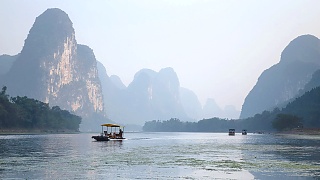
Filmed in November 2013. Places featured: Hong Kong *, Li River (GuangXi) *, LiJiang (YunNan), Tiger Leaping Gorge *, ChengDu (pandas), Tibet *, ShangHai, BeiJing (wild Great Wall *); * indicates most footage. With Jaap Barneveld ... ( : BeijingBuzzz - 20 years of the best China travel and culture videos : )
Beautiful natural scenery in north west China (north XinJiang 新疆)
North XinJiang province, including Kanas Lake. Awesome ! With Hogin Chen ...
China 中国 trip, BeiJing, ShangHai, Xi'An, GuiLin - don't miss it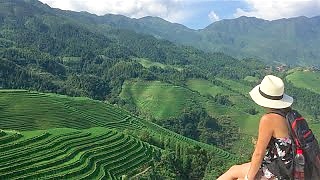
With MyWorldAt5feet ... Bonus film - diabolo around China ...
'Take me out tonight' (in Hong Kong 香港)
A beautiful and creative short film by Francis So ...
The awesomely beautiful HuangShan Mountain 黃山 Don't miss it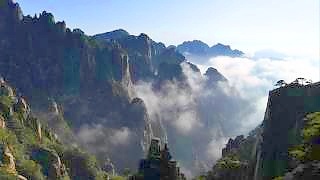
HuangShan lies in AnHui province, east China, to the west of HangZhou.
HanFu in SuZhou, with FunFancie - don't miss it
JiangSu province.
FunFancie goes to the Snow and Ice Festival in Harbin
XueXiang snow town, near Harbin, HeiLongJiang province - don't miss it
The awesome Harbin Snow and Ice Festival, HeiLongJiang province
With Seiu Travel ...
The awesome karst mountain scenery of GuangXi province
With Little Chinese Everywhere ... Bonus film - with A German In China ...
Yellow River highlands scenery in SiChuan province
With Little Chinese Everywhere ...
HaNi rice terraces, YuanYang, HongHe, YunNan province
With Little Chinese Everywhere ... The Hani rice terraces are a spectacular example of ancient agricultural engineering located in the Yuanyang County of Yunnan Province, China. These terraces are renowned for their beauty and cultural significance, as well as their sustainable farming practices that have been maintained for over a millennium. Historical and Cultural Background Origins and History The Hani people, an ethnic minority in China, began constructing these terraces around 1,300 years ago. They transformed the steep slopes of the Ailao Mountains into a series of stepped terraces, making the land suitable for rice cultivation. Cultural Significance The terraces are not just a testament to agricultural ingenuity but also a reflection of the Hani culture and their harmonious relationship with nature. The Hani people believe in a symbiotic relationship with their environment, which is reflected in their farming practices, spiritual beliefs, and festivals. Agricultural Practices Irrigation System A sophisticated irrigation system channels water from the forested mountaintops down through the terraces. This system ensures a stable water supply, critical for the cultivation of rice. Sustainability The Hani terraces are an example of sustainable farming, with practices that preserve soil fertility and biodiversity. Crop rotation and the use of natural fertilizers are integral parts of their agricultural methods. Natural and Scenic Beauty Visual Appeal The terraces are most visually striking during the planting season when the fields are filled with water, reflecting the sky and creating a mirror-like effect. During different seasons, the terraces change colors, ranging from the vibrant green of growing rice to the golden hues of the harvest season. Tourism The terraces attract tourists from around the world, especially photographers and nature enthusiasts. Key viewing points include Duoyishu, Bada, and Laohuzui, each offering breathtaking views of the terraces at different times of the day. UNESCO World Heritage Status Recognition In 2013, the Hani rice terraces were designated a UNESCO World Heritage Site. This recognition underscores their cultural and historical importance, as well as their unique agricultural landscape. Conservation Efforts Efforts are underway to preserve this heritage site, focusing on maintaining the traditional farming practices and protecting the environment from modern threats such as tourism pressure and climate change. Conclusion The Hani rice terraces are a remarkable blend of human ingenuity and natural beauty. They represent the Hani people's enduring relationship with their land, showcasing a sustainable agricultural system that has thrived for centuries. As both a cultural treasure and a stunning visual spectacle, the Hani rice terraces continue to captivate and inspire visitors from around the globe.
A trip to LiJiang, Jade Dragon Snow Mountain and Tiger Leaping Gorge, YunNan province - don't miss it !
'Relax and hold on tight'. With Gone With The Wynns ... Bonus films - Tiger Leaping Gorge - with Amazing Places on Our Planet ... With DuckTravel ...
Awesome Chinese cities by drone - don't miss it
With Exploropia ... 1:29 - (10) Chonqing 2:27 - (9) Hong Kong 4:12 - (8) Suzhou 5:57 - (7) Shenzhen 7:35 - (6) Guangzhou 8:32 - (5) Xi'an 10:46 - (4) Chengdu 12:17 - (3) Hanzhou 14:18 - (2) Beijing 16:41 - (1) Shanghai Bonus film - Hong Kong by drone ...
Awesome feel-good dance video ... Locations: The Great Wall, the Summer Palace, the "Bird's Nest" Beijing National Stadium, QianHai - HouHai, the Temple of Heaven, ZhongShan Park and The Place mall. Music:the fantastic Pink Martini - "Wo Yao Ni De Ai 我要你的爱" (I Want You, To Be My Baby) http://swingbeijing.com/
YunNan special - with Little Chinese Everywhere - don't miss it
Bright yellow canola fields and karst hills ... The HaNi rice terraces ... Above the clouds ... ShiPing Tofu (DoFu) ... YunNans's street food markets ... The Muslim minority in YunNan ...
The Great Wall of China, from above
With YoumiTrip ...
Wonderful landscapes ...
A 7,000 km journey by motorbike on the Tibetan plateau, QingHai
中波夫妻摩旅青藏高原 And in SiChuan ... And in YunNan ... Bonus film - high speed rail ... Bonus film 2 - XiaMen subway ...
A three day hike at the awesome HuangShan 黄山 (Yellow Mountain)
With Fragrant Mandarin ...
This is beautiful ShanXi 山西 province ...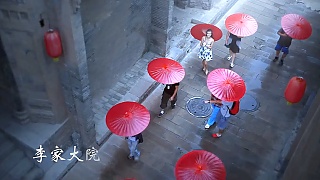
ShānXī province lies to the west / south-west of HeBei and BeiJing. The capital is TaiYuan. This film focuses on the plethora of impressive ancient sites and natural wonders; these include : * JinCi Temple 25 kilometers (16 miles) south west of TaiYuan, noted for its Song dynasty paintings and architecture. Founded about 1,400 years ago and expanded during the following centuries, this site has a diverse collection of more than 100 sculptures, buildings, terraces and bridges. * The Ancient City of PingYao is a UNESCO World Heritage Site near TaiYuan. Once a great financial center of China, it is noted for its preservation of many features of northern Han Chinese culture, architecture and way of life during the Ming and Qing dynasties. * The YunGang Grottoes, its literal translation being the Cloud Ridge Caves, are shallow caves near DaTong. There are over 50,000 carved images and statues of Buddhas and Boddhisatvas within these grottoes, ranging from 4 centimeters to 7 meters tall. This UNESCO World Heritage Site consists of 252 caves noted for their collection of 5th and 6th century Buddhist grotto sculptures and reliefs. * Mount WuTai Shan is the highest point in the province. It is known as the residence of the bodhisattva Manjusri, and as a result is also a major Buddhist pilgrimage destination, with many temples and natural sights. Points of interest include Tang Dynasty (618−907) era timber halls located at NanChan Temple and FoGuang Temple, as well as a giant white stupa at TaYuan Temple built during the Ming Dynasty (1368−1644). * Mount HengShan, one of the 'Five Great Peaks' of China, is also a major Taoist site. * The Hanging Temple (XuanKong Temple) is located on the side of a cliff, 75 meters (245 feet) up, and has survived for 1400 years despite earthquakes in the area. * The Pagoda of FoGong Temple built in 1056 during the Liao dynasty. It is octagonal with nine levels (five are visible from outside), and at 67 meters (220 feet) in height, it is currently the tallest wooden pagoda in the world and also the oldest fully wooden pagoda in China. * HuKou Waterfall on the Yellow River. At 50 meters high it is the second highest waterfall in China. ~~~ A very beautiful film - don't miss it ... A veritable masterclass in video shooting, storytelling, editing and sound mixing.
Tea - not just a drink, but a lifestyle
喝的是茶,过的是生活 Thousands of years ago, a magic leaf traveled worldwide from China. And this year, around Grain Rain, I went tea picking before the best season is gone. Then I roasted green tea and scented some with flowers! For me, drinking tea is as much of high art as everyday life-- that's the essence of inclusiveness. 【李子柒 LiZiQi】 A beautiful film by LiZiQi - don't miss it ...
YangShuo, GuiLin and the Li and YuLong rivers, GuangXi province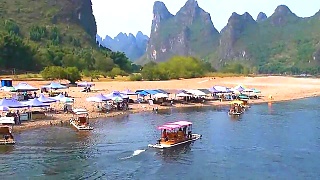
Discover ShanXi 山西 province ..
ShanXi province lies west / south west of BeiJing / HeBei. Best known places include PingYao, the YunGang Grottoes and JinCi Temple. ShanXi is packed with ancient Chinese culture.
An evening cruise along the HuangPu river in ShangHai 上海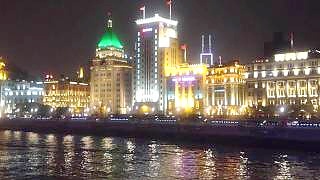
Within ShangHai, the HuangPu River has an average width of 400 meters and is crossed by many subway train lines, other tunnels, bridges and ferries. The river divides the city into two regions: PuDong to the east and PuXi (the older part of Shanghai that includes the Bund) to the west. It is the last major tributory of the YangTse River before the East China Sea. Bonus film - a stroll along the Bund, in 4k / UHD ...
11 / 11 - 'Singles' Day'. Maybe being an inseparable 11 is the better way compared to 11 ? 2 (1). Maybe that other 1 is art, or all humanity. Whatever it is for you - live more ... Four great romantic short stories from SiChuan province, in south west China ... If you can, please help us out with a donation (see the top of the sidebar on the right)
With ClaireTrips ...
GuiLin 桂林 photo tour : cormorant fishing, river rafting and landscape photography
Very beautiful scenes - don't miss it ...
Hiking the Great Wall of China at JianKou 箭扣, BeiJing
An awesome video - don't miss it ! With ClaireTrips ... Bonus films - ChenJiaPu 陈家沟 'wild' Great Wall ... Hiking the 'wild wall' is technically illegal for conservation reasons, and safety concerns. However, permits are available. It is recommended to go with a guide; 'dangerous' is not hype in places like JianKou - be careful - don't go alone, take your time, have a mobile and water with you, etc.
Happy in Shanghai ... and Macau ... and Hong Kong ... and ShenZhen ... : )( :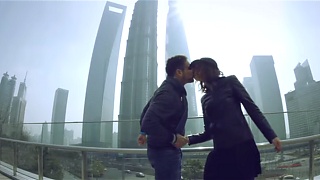
With a great song by Pharrell Williams Bonus film ... Family and friends from the Philippines on a trip to Beijing ...
Explore beautiful XinJiang 新疆 province ...
An awesome film - don't miss it ... September trip, in 2017; charming couple. XinJiang, north west China, includes the Tien Shan and Kunlun Shan mountains, the Taklimakan Desert, and the Tarim Basin.
Beautiful SiMaTai Great Wall and the nearby GuBei water-town
SiMaTai Great Wall lies about 159 kilometers NNE from BeiJing city and connects with JinShanLing Great Wall.
A selection of China's natural wonders 中国 ...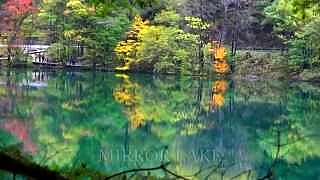
Follow this traveler's videos of places walked and adored. Discover some of China's incredibly diverse natural landscapes. Including JiuZhaiGou, the YuLong River, the ShiLin Stone Forest, DunHuang desert and oasis, Tiger Leaping Gorge and ZhangJiaJie. Chinese culture is founded on the harmony of people and nature and the reverence of natural beauty ... Plus, the beautiful Flight of the Dragon ...
Backpacking trip through central China
Xi’An : • City Wall • Terracotta Army ZhangYe : • MaTi Si • Rainbow Mountains • DanXia Grand Canyon DunHuang : • Gobi Desert
The awesome Spring Festival Gala 2017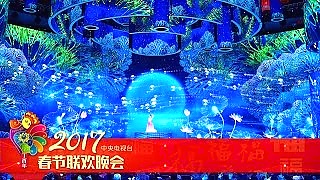
Some highlights from the five hour CCTV spectacular - the best ever ! From BeiJing, ShangHai, YangShuo and Harbin ...
Beautiful XiShuangBanNa 西双版纳, YunNan province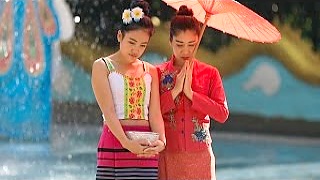
Home to the Buddhist Dai ethnic group, BanNa is close to the border with Myanmar, with an almost tropical climate.
Hángzhōu lies in ZheJiang province